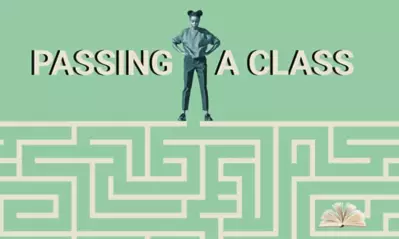The guide to going back to college online as a working adult

How to make college a reality
If you’re considering going back to college as an adult, you may be a little overwhelmed by all the things you have to do to prepare. It doesn’t have to be stressful, though. Getting started is all about making an organized plan of action. In this article, we’ll explore everything you need to know about making college a reality.
Most parents may find time management difficult because of an obvious imbalance: They often have more responsibilities than hours in the day. Between work and parenting (not to mention household tasks), their free time is so limited it may not seem possible to take on another major commitment like earning a bachelor’s or master’s degree.
But going back to school may be more viable than you think. And the benefits are tempting. Earning a bachelor’s or advanced degree can help you learn a new set of skills, position you for a career change or help increase your earning potential. Going back to school can also give you a personal sense of purpose and accomplishment.
Of course, students who are also parents must be able to effectively manage their time and responsibilities. Here, we outline several time-management strategies to help you reach your educational goals.
4 steps for going back to college as an adult
There are several steps to take when going back to school to get your degree, such as determining the right program or university and how you're going to pay for it. Let's look at four fundamental steps for going back to school as an adult learner.
1. Choose the right college program
Understanding where you want to be and how to get there starts with finding the right degree track. There are far more college programs out there than there used to be — and that’s a good thing. From business leadership to environmental science, the diversity of degrees currently available means students can tap their natural curiosity and interest when selecting a degree and subsequent career.
Start researching schools to find the program for you. Once you narrow your search for the right college, ask each school’s office of admissions if there are any prerequisite courses. You may need to complete those or meet any other requirements (besides a high school diploma or GED) to attend the school.
At University of Phoenix (UOPX), the range of college program options is quite broad. For instance, let’s say you are a registered nurse (RN) but are considering a career in administration or a specialty like a family nurse practitioner. UOPX offers an RN-BSN (Bachelor of Science in Nursing) program as well as Master of Science in Nursing programs to help you learn the skills for these careers. Or, if you’re great with computers, the BSIT degree
(Bachelor of Science in Information Technology) program may be the way to go.
2. Consider applying to an online college
Online universities offer a lot of advantages to adults who want to go back to school. In addition to 24/7 course availability (with sometimes several days to complete coursework), online universities can offer one-at-a-time class options, lower overall costs compared to in-person programs and greater flexibility than traditional colleges.
Applying to college is an important process. Make sure you set aside a few uninterrupted hours to focus on your application. One of the first things you’ll want to do for each school you plan to apply to is look up its admissions requirements, as each college will have its own.
If you have college credits from another institution and/or work-related training, some schools may allow you to convert your credits to their program(s). You can then later apply them toward a potential degree or certificate. University of Phoenix accepts a variety of transfer credits. We also offer free Prior Learning Assessment so students can earn credits for their work and life experience.
Many traditional, campus-based colleges have strict semester deadlines, but online universities are typically more flexible, offering start dates for programs on a kind of rolling calendar. If you’re wondering when and how to start, visit the University of Phoenix website for help today.
3. Determine available transfer credits
If you’ve previously attended an accredited university, you may have college credit that you can transfer and apply to your degree. This is important because transferring credits can save you both time and money. Plus, it gives you that mental boost to finish what you’ve started.
For academic credits to be eligible for transfer, they generally must be from courses that appear on an official transcript from an approved, accredited university. Generally, students must have passed a class with a minimum grade of a C-minus for the credits to qualify. (All universities are different, though. Check with the office of admissions to see if your credits qualify under its policy.)
Admissions representatives can also help you figure out whether your prior school has what’s called a "transfer agreement" with your next one. If so, it’ll make it easier to migrate your credits to the new institution.
From there, you’ll need to fill out a request form in your desired area of study, and have an enrollment/admissions representative help you figure out which credits are eligible to transfer .
4. Plan your finances
The next step is to figure out your financial situation. Identify what kind of budget you have for school and how much your new education will cost you in both the short and long-term. Federal student aid, which includes grants and loans, may help cover educational costs.
To apply for federal student aid, you’ll need to complete the Free Application for Federal Student Aid
(FAFSA). To do so, you’ll need to report your annual income and assets. This will help determine what you are eligible for. And while it can be intimidating to document so much personal information, the rewards can be worth it. If you are eligible, federal student aid can help cover tuition, textbooks and other classroom materials. For more information on eligibility requirements and the different types of federal student aid, visit https://studentaid.gov/understand-aid/types.
It’s also a good idea to consider applying for scholarships do not have to be repaid. Free online resources for returning students can be a great way to see what you may be eligible for.
Beyond federal student aid and scholarships, there are certain inherent benefits to online universities. With one-at-a-time class structures, virtual classes can offer serious economic incentives.
5 ways to use digital resources to your educational advantage
Gone are the days when college students were limited to learning in a physical classroom. Nowadays you can pursue education anywhere you have an internet connection. What’s more: There are a bevy of digital resources available to students looking to enhance their educational experience.
Whether you’re trying to earn a top grade in your Intro to Software Engineering course or complete your English degree online
, digital resources can help set you up for success. Read on to learn about the different resources you can use to improve your virtual learning journey.
Use tech to learn on the go
One of the best ways to be a successful online student is to stay mobile. For example, you can use your phone to catch up on assigned reading during your lunch break at work or travel with your laptop and get your schoolwork while hanging out by the pool.
All schools are different, but some are more digitally progressive than others. At University of Phoenix (UOPX), for example, students have access to an online portal
that allows them to participate in online classrooms, access their coursework and stay productive with tools like live chat and a digital calendar.
Using a mobile device, such as a phone or a tablet, is a great way to continue your online learning experience when you’re away from home. However, keep in mind that access to website functionality and required course materials may be limited on mobile devices, so make sure you’re still using a laptop or PC as your primary form of access.
Additionally, using web-based tools like Google Docs and taking advantage of the cloud means you can view and edit your schoolwork everywhere you go.
Embrace the power of artificial intelligence
Alexa, Siri and Cortana might all sound familiar. But what about Phoebe?
Recently, UOPX launched its first-ever virtual assistant, Phoebe, on MyPhoenix to provide 24/7/365 support to students and be the first point of contact for their most common questions on everything from financial aid to course schedules.
According to Chris Herring, UOPX Director of Student Services Strategy and Operations, "We regularly get feedback that Phoebe is helpful." He adds that students often say Phoebe provides them the information they need.
So, if you have a question at, say, 2 a.m. on Christmas Eve, you can get an answer without having to wait to reach an agent during UOPX’s business hours.
Since Phoebe’s full deployment, UOPX has seen a 100% increase in overall weekly chat volume —This is great news since the more students talk to Phoebe, the smarter she gets.
That said, there’s no need to worry about getting trapped in an endless conversation with AI. If you decide you need support from a staff member, Phoebe immediately transfers the chat to an agent to help resolve your question.
Another helpful AI resource is Brainly . This global online learning platform uses machine learning algorithms to match students’ academic questions with content experts. Additionally, Tutor Matching Service
gathers data to match students with private tutors based on subject, location, communication style, availability and more. (University of Phoenix is not associated with these companies.)
Take advantage of educational databases
As an online learner, you’ll have access to databases and other educational resources that can transform your educational experience.
For instance, did you know that many local libraries allow their patrons access to digital materials, including electronic books, article databases and electronic journals, through their websites? You’ll still need a library card, but you can save yourself the drive when you need reliable sources for a paper you’re writing.
UOPX students also have access to the university’s online library. This helpful hub is curated by experienced research staff and offers a collection of resources that are aligned with UOPX’s programs. Plus, if you have any questions about choosing a research topic or finding the best sources for your paper, you can ask for help online.
Get help through online student services
Since online universities mostly live in the digital sphere, they typically offer online student services, including career counseling via video chat and messaging apps.
Career counseling can be helpful if you’re unsure about the next steps in your educational or career journey. It’s not easy to figure out your future, but online career advisors can help you develop a plan to achieve your goals.
UOPX students and graduates, for example, can rely on a team of advisors who are able to help with career coaching, building resumés and preparing for job interviews.
Of course, succeeding as an online student isn’t all about getting your homework done and acing that next test. When you need support for life’s challenges — such as managing stress or finding the balance between work, school and life — UOPX offers helpful services through its Life Resource Center . These services include life coaching, counseling and more than 5,000 resources to help you be your best.
Other mental health digital resources include online therapy services such as BetterMynd , which helps college students through video therapy sessions. Additionally, here’s a complete list of mental health resources designed for college students. (University of Phoenix is not associated with these companies.)
Whether you’re studying for a physics test on your phone, speaking to a virtual assistant about your school’s payment plan or reaching out for help through online therapy, there is an abundance of digital resources you can take advantage of to help you thrive as an online student.

ABOUT THE AUTHOR
Brian Fairbanks is a freelance writer with a background in SEO content creation and blog article development
This article has been vetted by University of Phoenix's editorial advisory committee.
Read more about our editorial process.
Read more articles like this:






